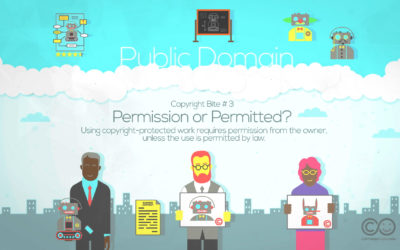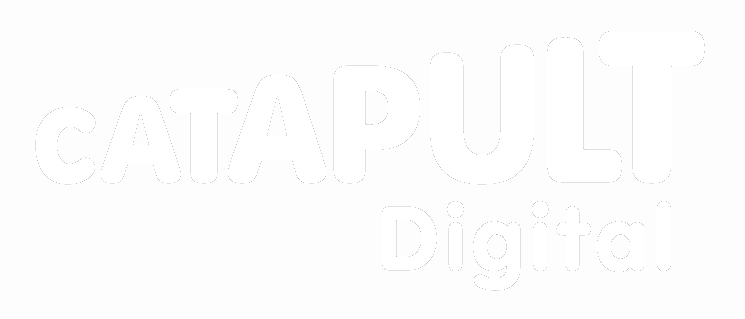News Reporting
Author: Smita Kheria
Illustration: Davide Bonazzi
News reporters may sometimes require the use of copyright material, such as short textual extracts or clips from video footage, to report current events. There is an exception to copyright for news reporting that allows reporters to make use of others’ work under certain circumstances.
In order to report current events, the reporter may use copyright materials to provide information to the public in relation to the respective events.
This is allowed under the following conditions:
1) The material used is not a photograph
2) The purpose is really for reporting current events
2) The use of the material is fair
3) The use of the material is accompanied by sufficient acknowledgement
For example, the illustration above shows several people working together on a newspaper. In order to produce the current issue, they want to draw upon a variety of different sources such as books, magazines, newspapers, film stock and the internet. Sometimes, they will be able to publish ideas and information set out in these sources without copying the expression used to convey such ideas and information. For instance, if a reporter reads an official document containing an explanation by a minister of a new government policy or sees a video footage of a football match where someone runs on the pitch and strikes a player then she can report these events in her own words, without use of any copyright materials. But sometimes the reporter may want to tell the public of the exact words used by a source or show a film clip in order to provide information on the current event in a clear or authoritative manner. Then, reporters may need to use excerpts from books, magazines, films, broadcasts or online content. This exception is aimed at protecting the role of the media in informing the public about matters of current concern.
The criteria needed for using the exception are explained in more detail below:
1. You have not used a photograph
You cannot use photographs protected under copyright for reporting current events without obtaining the permission of the respective copyright owner. The exception applies to use of all other types of copyright materials, but not photographs.
2. Your reason for using the material is genuinely for the purpose of reporting a current event
You can use copyright materials other than photographs if the purpose is really for reporting current events. The exception is not limited to any particular type of event and can thus extend to a wide array of current events no matter whether they occur in the field of politics, popular culture, sports, natural phenomena, and so on.
The event itself must be current. What constitutes a current event is interpreted liberally. It includes recent occurrences, in the sense of recent in time, which are of real interest to the public. It also includes past events if they continue to be matters of legitimate and continuing public interest. An example would be the use of material pertaining to a past meeting between politicians which is of current public interest because it may influence the voting behaviour at the next elections.
The news reporting exception can be used if the reporting of the current events is intended for public consumption. For example, news that is tailored for exclusive use by a certain group of individuals for private commercial purposes would not be acceptable.
3. Your use of the material is fair
You can use copyright material for the purpose of reporting current events provided your use of material is fair. There is no legal definition of what is fair or unfair; it is at the court’s discretion based on the individual facts of the case and the purpose for which the material is being used (see: ‘Legal language’ below). However, there are guidelines which you need to consider.
First, is or would your use of the copyright material be in commercial competition with the copyright owner’s exploitation of the material? Are you really using copyright material to report on current events or are you pursuing another purpose? It would be unfair if your work is a substitute for the probable purchase of authorised copies of the original material, or if it severely devalues the original material. For example, a verbatim passage of a memoir or a politician’s diary entry can be used in a news article if it is essential for the content that is being reported on because it serves an additional purpose by rectifying an error or inaccuracy or by highlighting a new perspective and engaging in political discourse. However, it cannot be included if the passage simply is to make the article more colourful or attractive or appealing to the readers and bring resulting commercial value. Ask yourself: Is there a compelling need to use the copyright work for the purpose of reporting the current event? Would the use unreasonably prejudice the commercial interests of the copyright owner?
Second, has the material that you want to use already been published or disclosed to the public? Even though copyright material that has not been available to the public, such as material that has only been made available confidentially, can be used, you should bear in mind that this could make your assertion of the news reporting exception very difficult unless there is some legitimate and continuing public interest in making such use. Therefore, ask yourself: Is it really necessary to use the previously undisclosed copyright material for the purpose of reporting the current event? If the material used is already available to the public, such as historical material, then also you must ask yourself: Is it really necessary to refer to these materials in order to report the current event? For example, reprinting historical correspondence dealing with nuclear reactors which have just had a core melt-down would be relevant in order to report on the current event. However, reprinting historical personal correspondence of a public figure simply because they have recently died would not necessarily be relevant.
Third, what is the amount of copyright material used and what is its importance? A substantial amount of the material can be used provided that it is not excessive and only what is needed to report the current event is used. If an excessive amount or the most important parts of the material are used to further commercial interests, although it was not necessary for reporting the current event, then such use would be unfair. Ask yourself: Is it really necessary to use the amount of material and the type of material for the purpose of reporting the current event?
4. Your use of material is accompanied by sufficient acknowledgement
Finally, you must include an acknowledgement to identify the creator of the work and the title of the material. It is the author who should be identified and not the owner of the copyright. Alternative forms of identification such as the television transmission of a company logo can suffice if the author of the television programme is accustomed to identifying itself by that logo. However, it is not enough to make a simple reference in a newspaper article to the fact that the story originates with another newspaper.
This requirement does not always have to be observed. The author must be clearly identified for all copyright materials used unless you are using sound recordings, film or broadcasts and it is impossible to give credit to the creator for reasons of practicality or otherwise. The requirements for ‘impossible’ are considered strict and you must be able to show that you made reasonable efforts to identify the author.
Legal language:
This is a quote taken from a book on Copyright and Designs, which explains the relevant considerations for determining whether a copyright work has been used fairly for the purpose of reporting current events. The quote has received support in a legal case (Ashdown v Telegraph Group Ltd [2002] Ch. 149) as being a helpful summary:
‘It is impossible to lay down any hard-and-fast definition of what is fair dealing, for it is a matter of fact, degree and impression. However, by far the most important factor is whether the alleged fair dealing is in fact commercially competing with the proprietor’s exploitation of the copyright work, a substitute for the probable purchase of authorised copies, and the like. If it is, the fair dealing defence will almost certainly fail. If it is not and there is a moderate taking and there are no special adverse factors, the defence is likely to succeed, especially if the defendant’s additional purpose is to right a wrong, to ventilate an honest grievance, to engage in political controversy, and so on. The second most important factor is whether the work has already been published or otherwise exposed to the public. If it has not, and especially if the material has been obtained by a breach of confidence or other mean or underhand dealing, the courts will be reluctant to say this is fair. However this is by no means conclusive, for sometimes it is necessary for the purposes of legitimate public controversy to make use of “leaked” information. The third most important factor is the amount and importance of the work that has been taken. For, although it is permissible to take a substantial part of the work (if not, there could be no question of infringement in the first place), in some circumstances the taking of an excessive amount, or the taking of even a small amount if on a regular basis, would negative fair dealing.’
Laddie H, P Prescott and M Vitoria, The Modern Law of Copyright and Designs (Butterworths, 3rd ed. 2000) at [20.16]
Legal references:
The law on reporting current events in the United Kingdom is found in Section 30(2), (3) of the Copyright Designs and Patent Act 1988, which you can read here:
Related
Terms & Conditions
Terms and conditions are a set of rules. These rules generally form a contract between you, the user, and the service provider, whose website you are visiting.
Quotation
There are two exceptions to be aware of, one specifically for criticism and review and a more general exception for quotation. Both exceptions apply to all types of copyright material…
Copyright Bite #3
Copyright Bite #3 considers how you can lawfully make use of, or borrow from, works that are still in copyright, but without having to ask for permission or make payment to the copyright owner.











